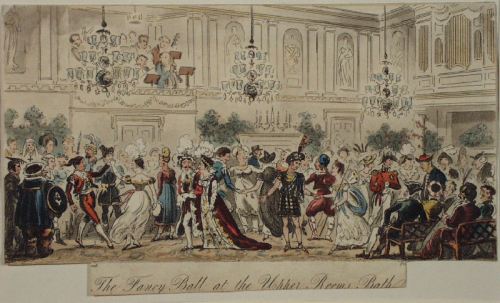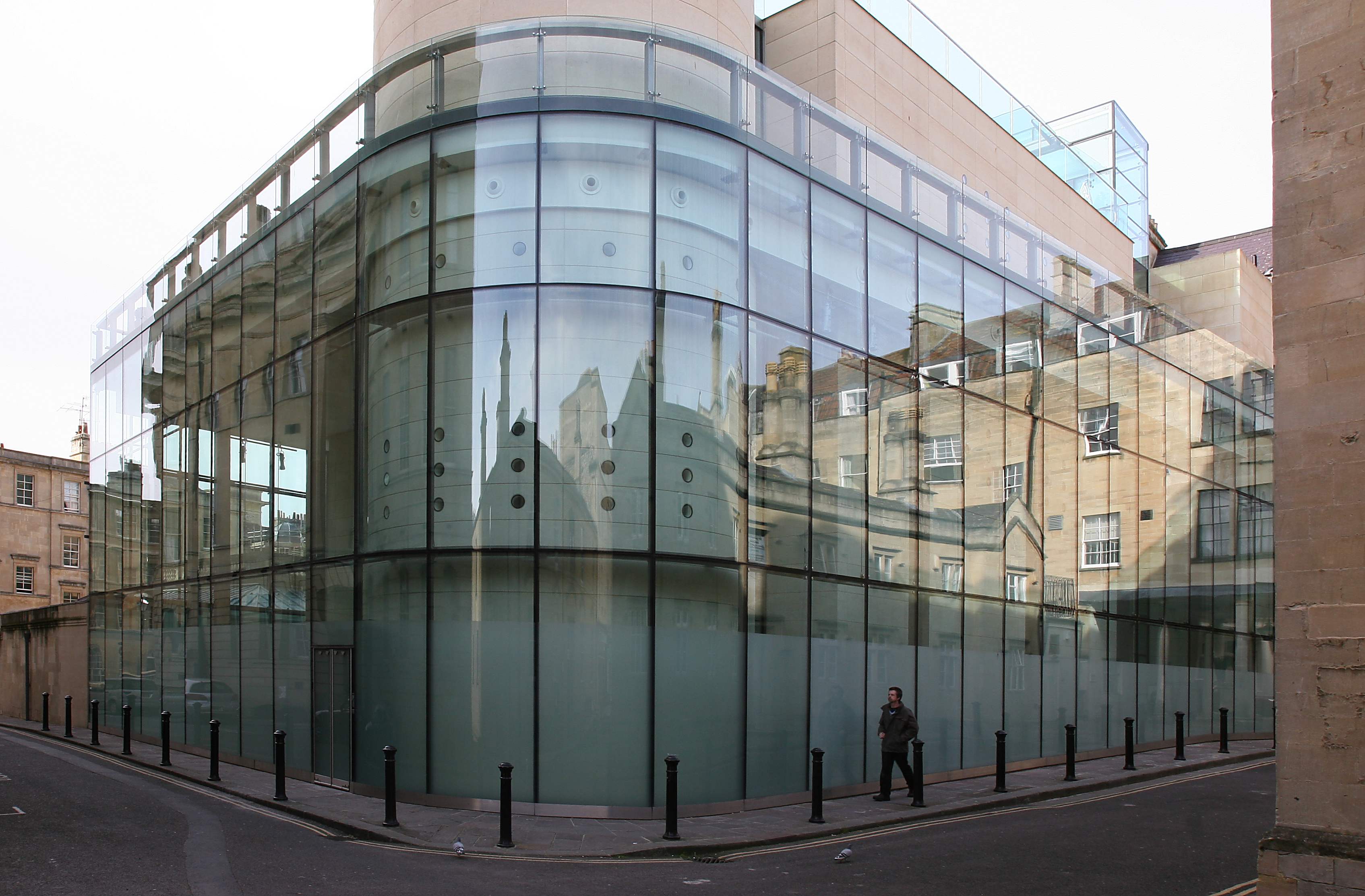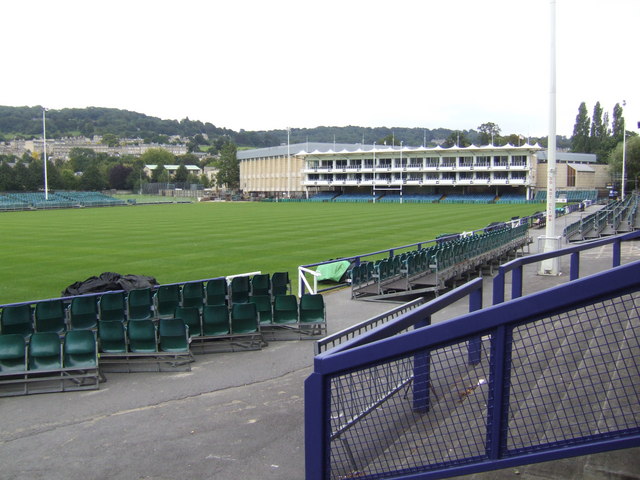|
Abbey, Bath
Abbey was an electoral ward covering the centre of Bath, England. It was abolished as part of the boundary changes effected at the elections held on 2 May 2019. Abbey is rarely used as the name of an area of Bath, and was primarily used just for electoral purposes within the Bath and North East Somerset unitary authority; it elected two councillors. ''St John's Catholic Primary School'' is located on the eastern edge of the former ward. The electoral wards surrounding the ward were: Lansdown and Walcot to the north, Bathwick to the east, Widcombe to the south, and Kingsmead to the west. Notable places Some notable places within the former ward are: * Assembly Rooms *Bath Abbey * The Circus * Grand Pump Room *Guildhall *Pulteney Bridge * Recreation Ground *Roman Baths *Thermae Bath Spa Thermae Bath Spa is a combination of the historic spa and a contemporary building in the city of Bath, Somerset, Bath, England, and reopened in 2006. Bath and North East Somerset council ... [...More Info...] [...Related Items...] OR: [Wikipedia] [Google] [Baidu] |
Bath And North East Somerset
Bath and North East Somerset (B&NES) is a unitary authority district in England. Bath and North East Somerset Council was created on 1 April 1996 following the abolition of the county of Avon. It is part of the ceremonial county of Somerset. The unitary authority provides a single tier of local government with responsibility for almost all local government functions within the district, including local planning and building control, local roads, council housing, environmental health, markets and fairs, refuse collection, recycling, cemeteries, crematoria, leisure services, parks, and tourism. It is also responsible for education, social services, libraries, main roads, public transport, trading standards, waste disposal and strategic planning, although fire, police and ambulance services are provided jointly with other authorities through the Avon Fire and Rescue Service, Avon and Somerset Constabulary and the South Western Ambulance Service. Its administrative headquarters ... [...More Info...] [...Related Items...] OR: [Wikipedia] [Google] [Baidu] |
Bath Assembly Rooms
The Bath Assembly Rooms, designed by John Wood the Younger in 1769, are a set of assembly rooms located in the heart of the World Heritage City of Bath in England which are now open to the public as a visitor attraction. They are designated as a Grade I listed building. During the Georgian era Bath became fashionable, and the architects John Wood, the Elder, and his son laid out new areas of housing for residents and visitors. Assembly rooms had been built early in the 18th century, but a new venue for balls, concerts and gambling was envisaged in the area between Queen Square, The Circus and the Royal Crescent. Robert Adam submitted a proposal that was rejected as too expensive. John Wood, the Younger raised funding through a tontine, and construction started in 1769. The new or upper assembly rooms opened with a grand ball in 1771 and became the hub of fashionable society, being frequented by Jane Austen and Charles Dickens, along with the nobility of the time. The bu ... [...More Info...] [...Related Items...] OR: [Wikipedia] [Google] [Baidu] |
Thermae Bath Spa
Thermae Bath Spa is a combination of the historic spa and a contemporary building in the city of Bath, Somerset, Bath, England, and reopened in 2006. Bath and North East Somerset council own the buildings, and, as decreed in a Royal Charter of 1590, are the guardians of the spring waters, which are the only naturally hot, mineral-rich waters in the UK. The Spa is operated by YTL Hotels. The main spa building, the New Royal Bath, was designed by Grimshaw Architects and is constructed in Bath stone, enclosed by a glass envelope. It has two natural thermal baths, an open-air rooftop pool and an indoor pool, and a large Wellness Suite with two aromatic steam rooms, an Ice Chamber, Infrared Sauna and a Celestial Relaxation Room. It also has a cafe, three relaxation areas, and 27 spa treatment rooms, including the 18th century Hot Bath, in which water-based massage such as Watsu takes place. The separate Cross Bath is a grade I listed Georgian building containing one open-air thermal ... [...More Info...] [...Related Items...] OR: [Wikipedia] [Google] [Baidu] |
Roman Baths (Bath)
The Roman Baths are well-preserved ''thermae'' in the city of Bath, Somerset, England. A temple was constructed on the site between 60–70AD in the first few decades of Roman Britain. Its presence led to the development of the small Roman urban settlement known as ''Aquae Sulis'' around the site. The Roman baths—designed for public bathing—were used until the end of Roman rule in Britain in the 5th century AD. According to the ''Anglo-Saxon Chronicle'', the original Roman baths were in ruins a century later. The area around the natural springs was redeveloped several times during the Early and Late Middle Ages. The Roman Baths are preserved in four main features: the Sacred Spring, the Roman Temple, the Roman Bath House, and a museum which holds artefacts from ''Aquae Sulis''. However, all buildings at street level date from the 19th century. It is a major tourist attraction in the UK, and together with the Grand Pump Room, receives more than 1.3 million visitors annuall ... [...More Info...] [...Related Items...] OR: [Wikipedia] [Google] [Baidu] |
Recreation Ground (Bath)
The Recreation Ground (commonly ''the Rec'') is a large open space in the centre of Bath, England, next to the River Avon, which is available to be used by permission from the Recreation Ground Trust for recreational purposes by the public at large but particularly the people of Bath and surrounding areas.The Recreation Ground, Bath - a statement under the Charities Act , 22 August 2007 About a quarter of the Rec is leased to during t ... [...More Info...] [...Related Items...] OR: [Wikipedia] [Google] [Baidu] |
Pulteney Bridge
Pulteney Bridge is a bridge over the River Avon in Bath, England. It was completed by 1774, and connected the city with the land of the Pulteney family which it wished to develop. Designed by Robert Adam in a Palladian style, it is highly unusual in that it has shops built across its full span on both sides. It has been designated as a Grade I listed building. Within 20 years of its construction, alterations were made that expanded the shops and changed the façades. By the end of the 18th century, it had been damaged by floods, but was rebuilt to a similar design. Over the next century alterations to the shops included cantilevered extensions on the bridge's north face. In the 20th century, several schemes were carried out to preserve the bridge and partially return it to its original appearance, enhancing its appeal as a tourist attraction. The bridge is now long and wide. Although there have been plans to pedestrianise the bridge, it is still used by buses and taxis. The ... [...More Info...] [...Related Items...] OR: [Wikipedia] [Google] [Baidu] |
Guildhall, Bath
Guildhall is an 18th-century municipal building in central Bath, Somerset, England. It is a Grade I listed building. History The earliest mention of a guildhall here was in 1359, where it used to be the meeting place of the powerful trade guilds. The medieval guildhall (situated behind the modern building) was mentioned by Elizabeth Holland in 1602 as a timber-framed building with a tiled roof and stone floors strewn with rushes. This building was replaced by a Jacobean guildhall, on approximately the same site, in 1625. The building consisted of a council chamber and an armoury (where weapons were stored prior to the civil war) on the first floor. By the end of the 17th century, the room was used for social gatherings, concerts and plays. The building was considerably enlarged to a design by William Killigrew in 1725, and a series of specially commissioned paintings by Jan Baptist van Diest was subsequently put on display. The current Bath stone building, designed by Thomas ... [...More Info...] [...Related Items...] OR: [Wikipedia] [Google] [Baidu] |
Grand Pump Room, Bath
The Grand Pump Room is a historic building in the Abbey Churchyard, Bath, Somerset, England. It is adjacent to the Roman Baths and is named for water that is pumped into the room from the baths' hot springs. Visitors can drink the water or have other refreshments while there. It has been designated as a Grade I listed building since 1950. Along with the Lower Assembly Rooms, it formed a complex where social activity was centred, and where visitors to the city gathered. History The present building replaced an earlier one on the same site, designed by John Harvey at the request of Beau Nash, Bath's master of ceremonies, in 1706, before the discovery of Roman remains nearby. The main block, built of Bath stone, was begun by Thomas Baldwin, and the foundations of a Roman temple precinct were discovered during preparatory excavations. The North Colonnade of nine bays, with unfluted Ionic columns, was built by Baldwin in 1786–1790. Baldwin was dismissed, as a result of fina ... [...More Info...] [...Related Items...] OR: [Wikipedia] [Google] [Baidu] |
The Circus (Bath)
The Circus is a historic ring of large townhouses in the city of Bath, Somerset, England, forming a circle with three entrances. Designed by architect John Wood, the Elder, it was built between 1754 and 1769, and is regarded as a pre-eminent example of Georgian architecture. The name comes from the Latin ''circus'', meaning a ring, oval or circle. It has been designated as a Grade I listed building. The Circus is divided into three segments of equal length, with a lawn in the centre. Each segment faces one of the three entrances, ensuring a classical façade is always presented straight ahead. History The Circus, originally called King's Circus, was designed by the architect John Wood, the Elder. Convinced that Bath had been the principal centre of Druid activity in Britain, Wood surveyed Stonehenge, which has a diameter of at the outer earth bank, and designed the Circus with a diameter to mimic this. Wood died less than three months after the first stone was la ... [...More Info...] [...Related Items...] OR: [Wikipedia] [Google] [Baidu] |
Bath Abbey
The Abbey Church of Saint Peter and Saint Paul, commonly known as Bath Abbey, is a parish church of the Church of England and former Benedictine monastery in Bath, Somerset, England. Founded in the 7th century, it was reorganised in the 10th century and rebuilt in the 12th and 16th centuries; major restoration work was carried out by Sir George Gilbert Scott in the 1860s. It is one of the largest examples of Perpendicular Gothic architecture in the West Country. The medieval abbey church served as a sometime cathedral of a bishop. After long contention between churchmen in Bath and Wells the seat of the Diocese of Bath and Wells was later consolidated at Wells Cathedral. The Benedictine community was dissolved in 1539 during the Dissolution of the Monasteries. The church architecture is cruciform in plan and can seat up to 1,200 patrons. An active place of worship, it also hosts civic ceremonies, concerts and lectures. There is a heritage museum in the cellars. The abbey i ... [...More Info...] [...Related Items...] OR: [Wikipedia] [Google] [Baidu] |
Kingsmead, Bath
Kingsmead is an electoral ward within Bath, England, which encompasses most of Bath city centre and stretches west along the A4 to meet Newbridge and Weston wards. The ward elects two councillors to the Bath and North East Somerset unitary authority. Kingsmead is rarely used as the name of an area of Bath, and is primarily used for electoral purposes. The ward stretches about westward from Bath city centre, straddling the A4 road north of the River Avon. The ward is separated by the large Royal Victoria Park into a city centre eastern end, and a western residential end known as Lower Weston. A boundary review in 2018, which came into force at the May 2019 local elections, abolished Abbey ward and extended Kingsmead eastwards as far as the Avon to include most of the city centre. At the same time the ward's western extent was slightly reduced, in order to move the Chelsea Road shopping street wholly into Newbridge ward. Residents in the western end of the ward often use t ... [...More Info...] [...Related Items...] OR: [Wikipedia] [Google] [Baidu] |
Somerset
( en, All The People of Somerset) , locator_map = , coordinates = , region = South West England , established_date = Ancient , established_by = , preceded_by = , origin = , lord_lieutenant_office =Lord Lieutenant of Somerset , lord_lieutenant_name = Mohammed Saddiq , high_sheriff_office =High Sheriff of Somerset , high_sheriff_name = Mrs Mary-Clare Rodwell (2020–21) , area_total_km2 = 4171 , area_total_rank = 7th , ethnicity = 98.5% White , county_council = , unitary_council = , government = , joint_committees = , admin_hq = Taunton , area_council_km2 = 3451 , area_council_rank = 10th , iso_code = GB-SOM , ons_code = 40 , gss_code = , nuts_code = UKK23 , districts_map = , districts_list = County council area: , MPs = * Rebecca Pow (C) * Wera Hobhouse ( LD) * Liam Fox (C) * David Warburton (C) * Marcus Fysh (C) * Ian Liddell-Grainger (C) * James Heappey (C) * Jacob Rees-Mogg (C) * John Penrose (C) , police = Avon and Somerset Police ... [...More Info...] [...Related Items...] OR: [Wikipedia] [Google] [Baidu] |








